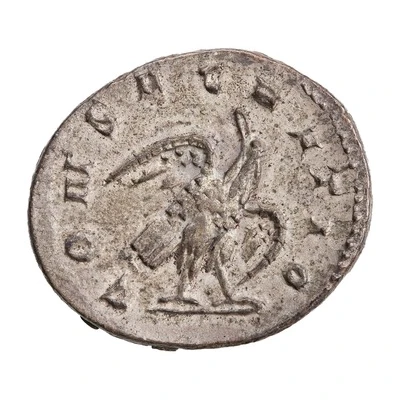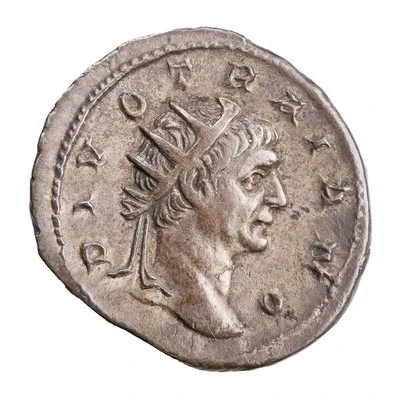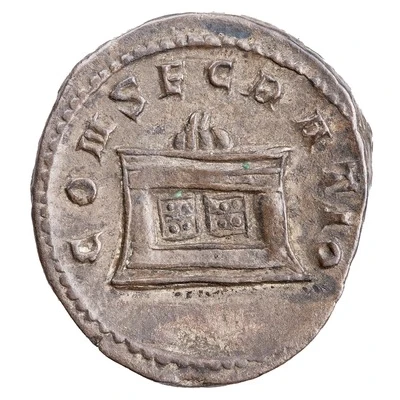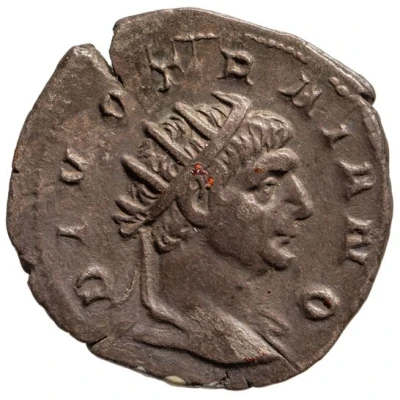
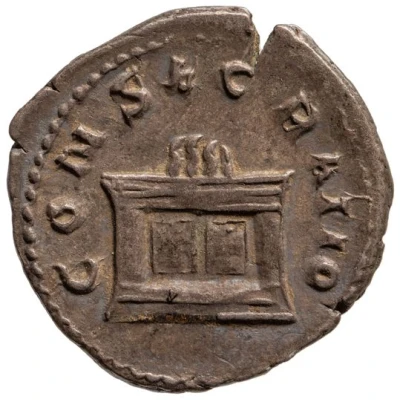

© Kunst Historisches Museum Wien (CC BY-NC-SA 3.0)
Antoninianus - Trajan Posthumous; CONSECRATIO
| Silver | 3.5 g | 21.5 mm |
| Issuer | Rome › Roman Empire (27 BC - 395 AD) |
|---|---|
| Emperor | Decius (Gaius Messius Quintus Traianus Decius) (249-251) |
| Type | Standard circulation coin |
| Years | 250-251 |
| Value | Antoninianus (1) |
| Currency | Antoninianus, Reform of Caracalla (AD 215 – 301) |
| Composition | Silver |
| Weight | 3.5 g |
| Diameter | 21.5 mm |
| Shape | Round (irregular) |
| Technique | Hammered |
| Orientation | Variable alignment ↺ |
| Demonetized | Yes |
| Updated | 2024-10-05 |
| Numista | N#283048 |
|---|---|
| Rarity index | 95% |
Reverse
Rectangular altar, with four panels in front, lighted.
Script: Latin
Lettering: CONSECRATIO
Translation: Consecration.
Comment
Mass varies: 2.75–4.15 g;Diameter varies: 21–22 mm;
Source:
Online Coins of the Roman Empire (OCRE)
Interesting fact
The Antoninianus coin was issued during the reign of Trajan, who was the Roman Emperor from 98 to 117 AD. The coin was minted posthumously, meaning it was created after Trajan's death, and it features an image of the emperor on one side and the goddess Consecratio on the other. The coin was made of silver and weighed 3.5 grams. It's interesting to note that the Antoninianus coin was introduced during Trajan's reign as a replacement for the denarius, which had been the standard Roman coin for centuries. The Antoninianus was valued at 2 denarii and was intended to be a more convenient and practical coin for everyday transactions. It was widely used throughout the Roman Empire and remained in circulation for centuries.

